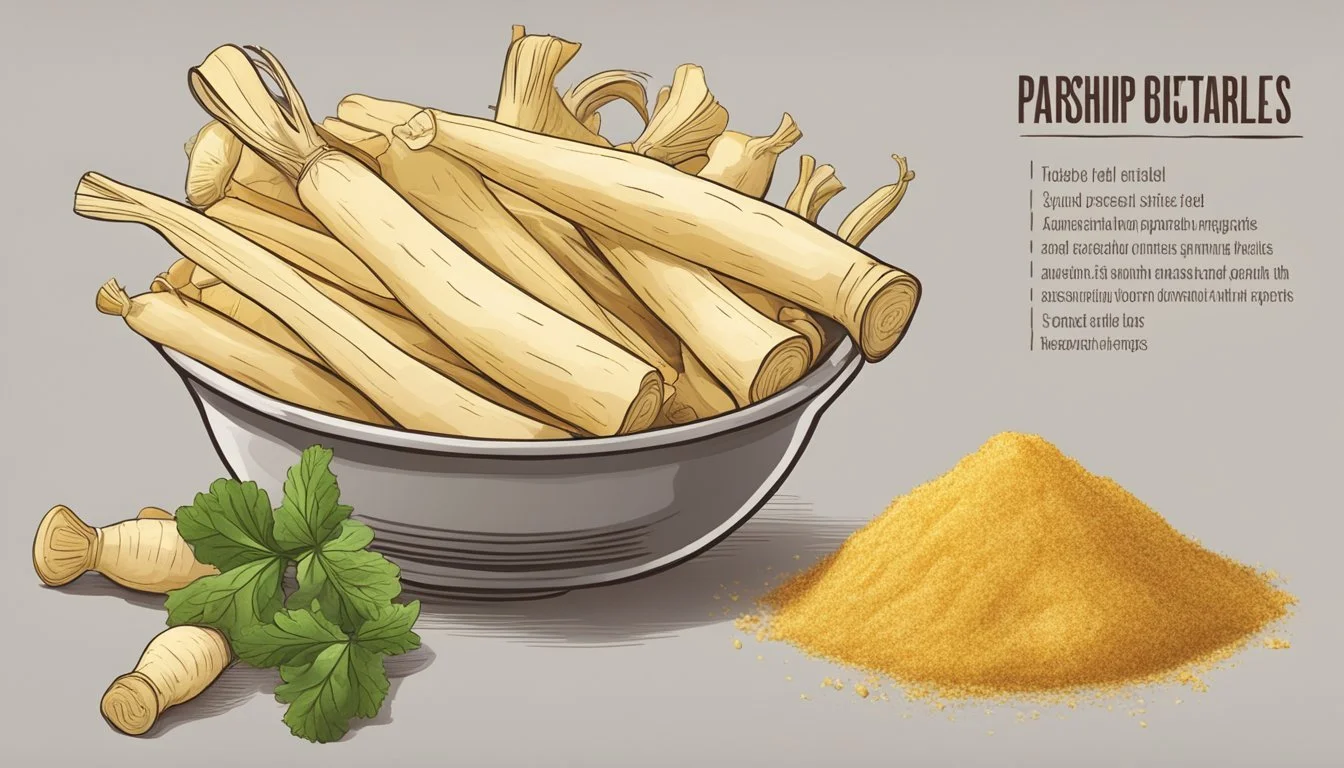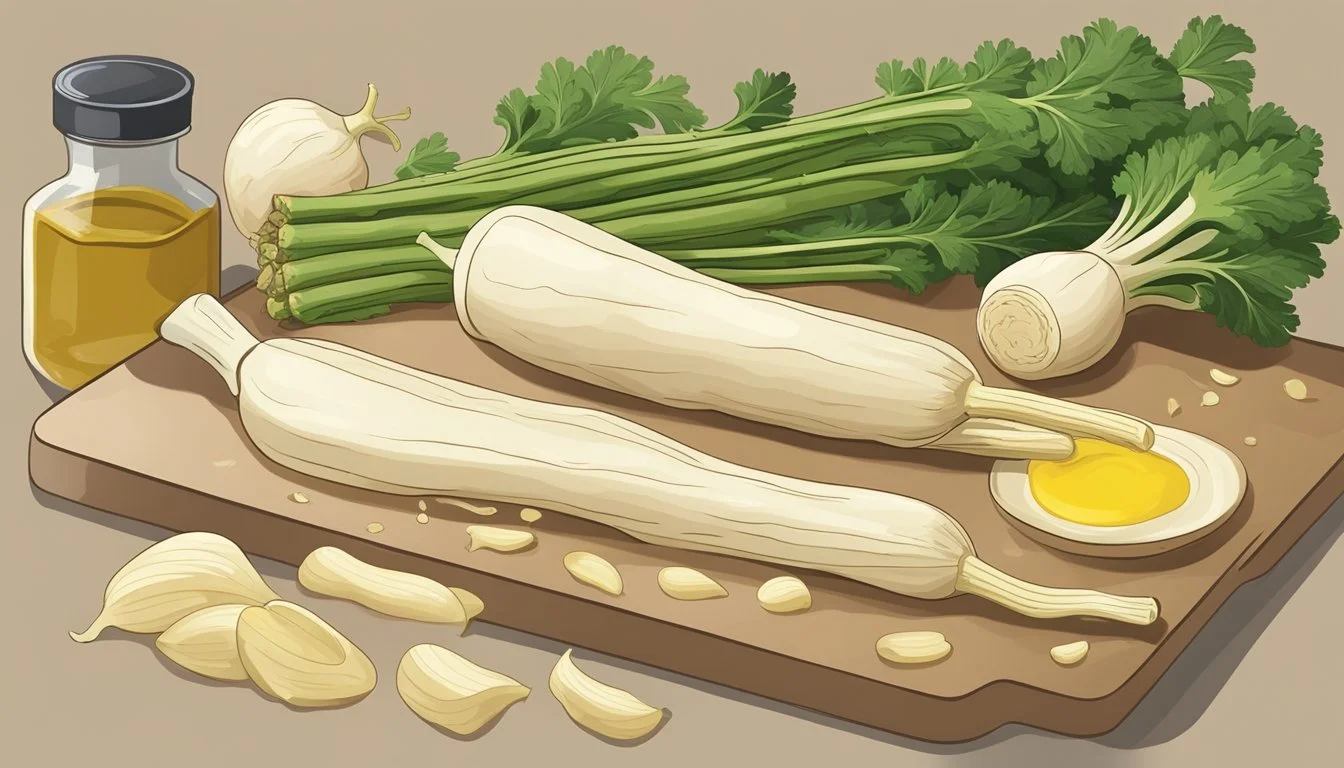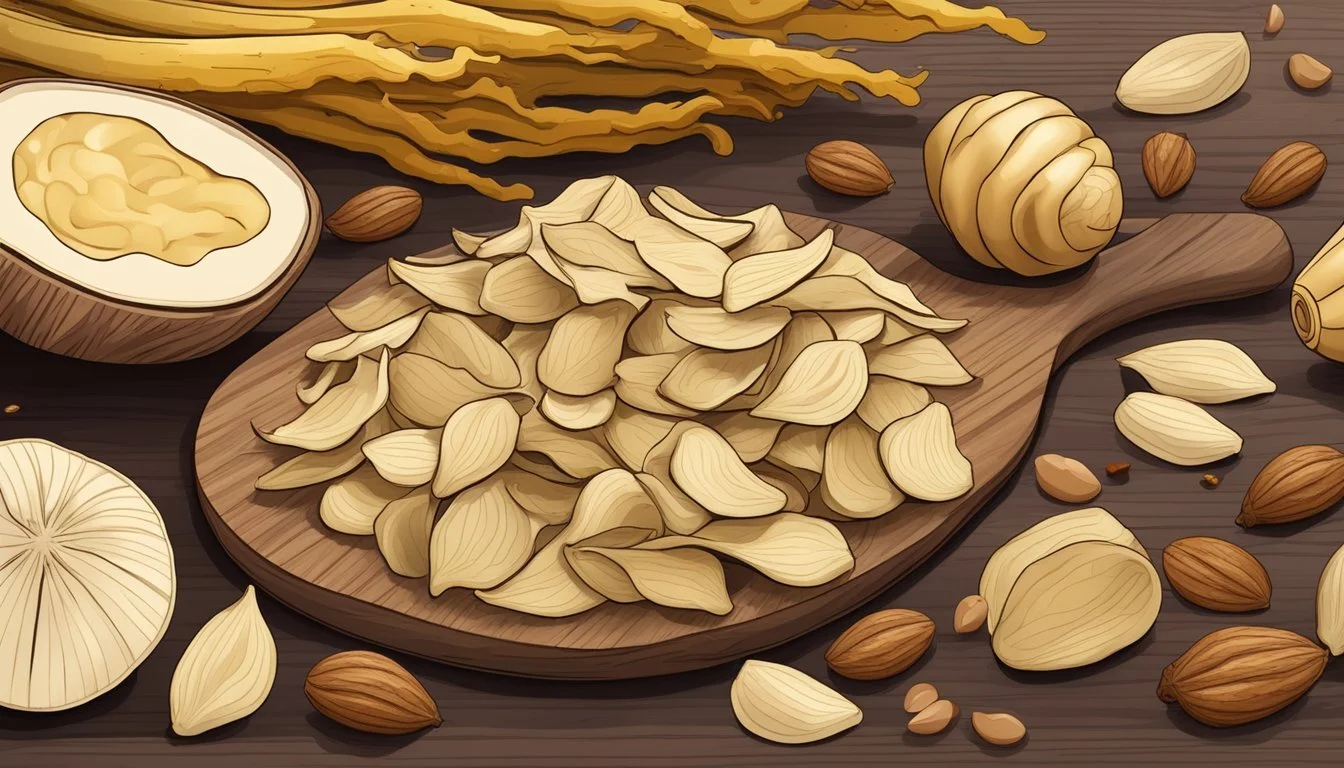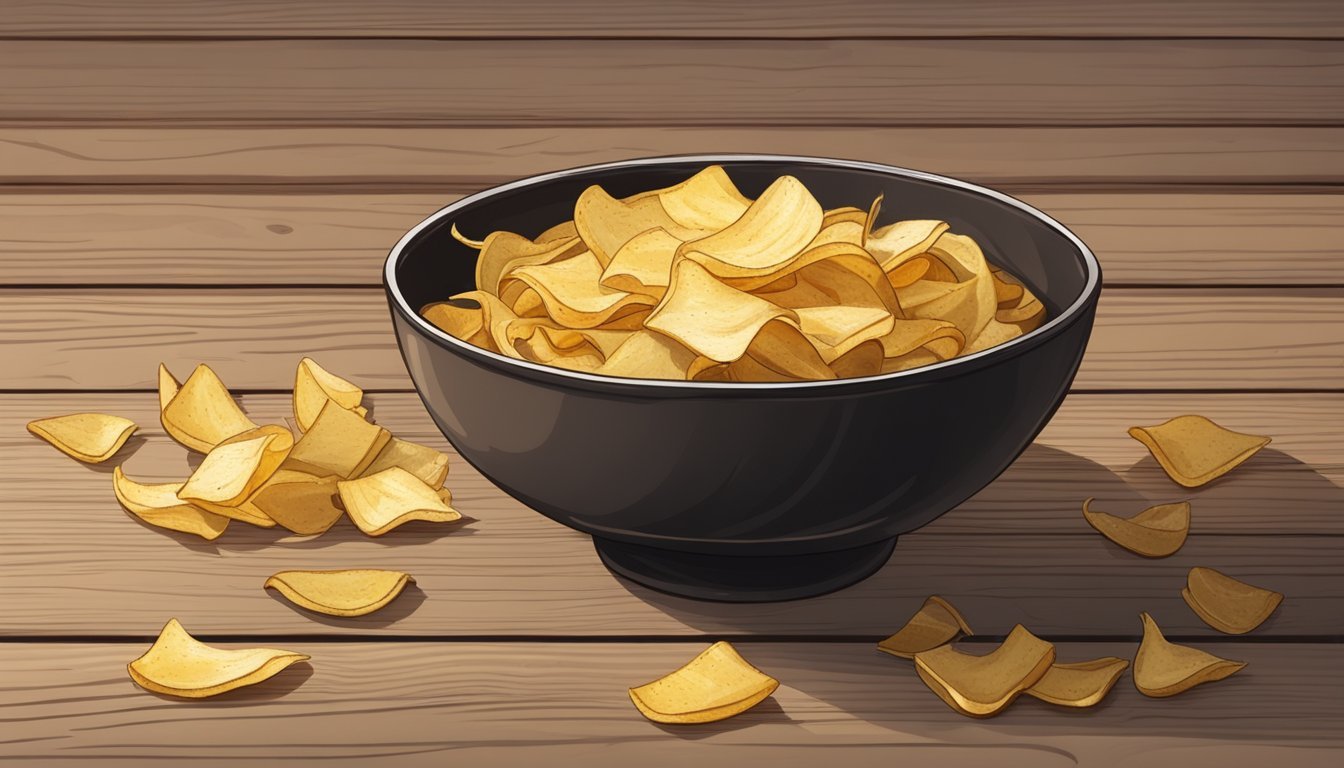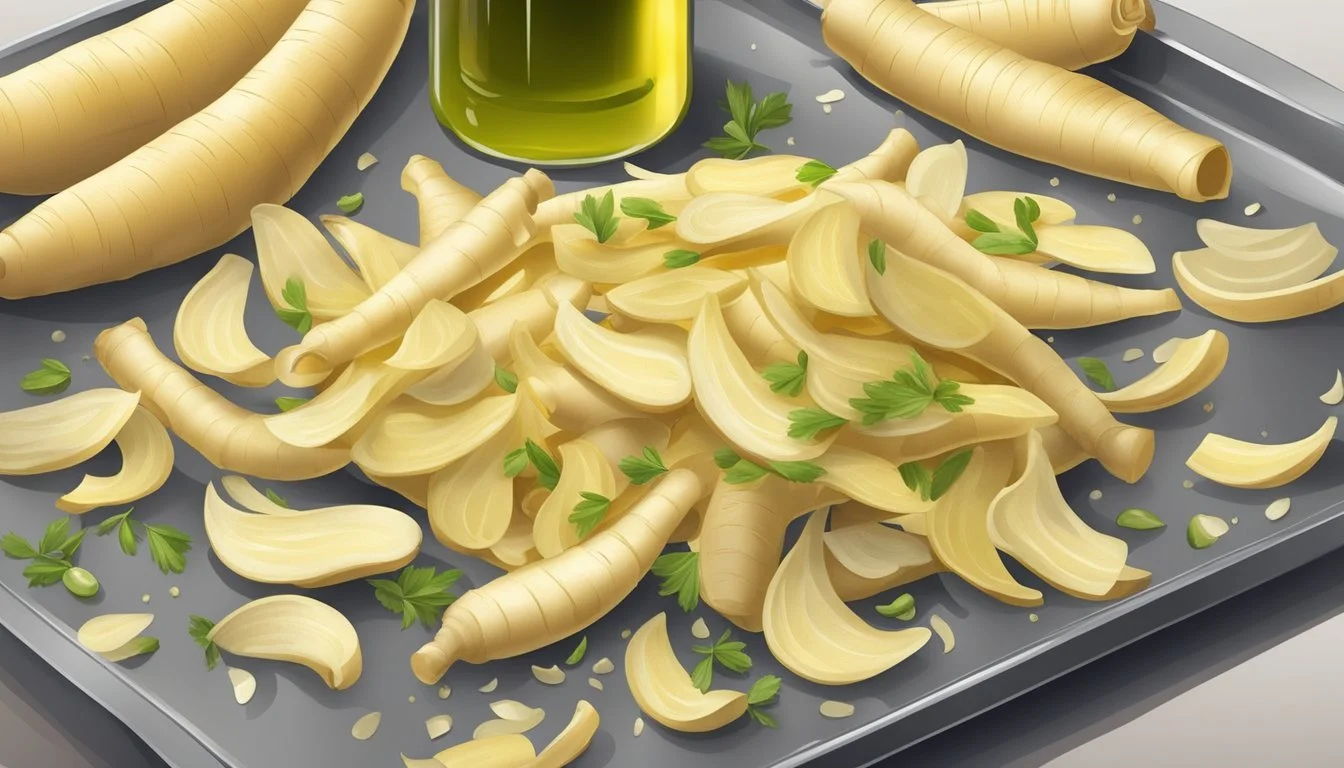Parsnip Peel Crisps
A Nutty, Earthy Snack Revolution in Healthy Eating
Parsnip peel crisps are emerging as a favored snack for the health-conscious and those looking to infuse a bit of creativity into their snack repertoire. With their nutty and subtly earthy flavor, parsnip peels offer a delightful alternative to traditional potato chips and introduce a new way to enjoy this often-overlooked vegetable. These crisps utilize the peels of parsnips, which are frequently discarded, making for an eco-friendly and waste-reducing option.
Making parsnip peel crisps involves thinly slicing the outer layer of parsnips and cooking them until they reach a desirable level of crispiness. The process can be carried out using various techniques including deep-frying, air-frying, or baking, accommodating different dietary preferences and kitchen setups. Given the versatility of parsnips, the crisps pair well with a range of seasonings, from classic salt to more adventurous spice blends, enabling a custom snacking experience.
As a snack, parsnip peel crisps offer not just a savory taste and satisfying crunch but also nutritional benefits. Parsnips themselves are a good source of fiber, vitamins, and minerals, adding an extra dimension of wholesomeness to this snack. Whether served at a gathering, enjoyed as a mid-afternoon treat, or used as a topping for soups and salads, parsnip peel crisps present a unique culinary opportunity to both indulge and nourish.
The Appeal of Parsnip Peel Crisps
Parsnip peel crisps present a unique snack option that marries the desire for crunch with nutritional benefits. They are made from the often-discarded skins of parsnips, providing a healthy and eco-friendly alternative to traditional potato chips.
Nutritionally Wise: Parsnip peels are a good source of fiber, which aids in digestion and promotes a feeling of fullness. The snack is naturally low in calories, making it a sensible choice for those monitoring their calorie intake.
Vegan-Friendly Snack: For individuals following a vegan diet, parsnip peel crisps offer a plant-based snacking option that's both satisfying and aligned with their dietary choices. Made with simple ingredients such as parsnip peels and seasoning, these crisps are inherently vegan.
Healthy Fats: Often, parsnip peel crisps are prepared with heart-healthy oils. This choice of oil enhances the nutrition profile of the crisps by contributing healthy fats that are beneficial when consumed in moderation.
Aspect Benefit Fiber Content Promotes satiety Low-Calorie Supports weight management Plant-Based Suitable for vegans Healthy Fats Essential for wellbeing
Parsnip peel crisps exhibit a nutty, earthy flavor that is distinct and appealing to those seeking a gourmet tasting experience. They offer a healthy snack alternative that doesn't compromise on taste. This combination of nutrition, ethics, and taste is what gives these crisps their wide appeal.
Selecting Quality Parsnips
When venturing to select quality parsnips, one should look for certain characteristics to ensure they are getting the best of this versatile root vegetable. Parsnips, with their sweet and earthy taste, are an excellent addition to a variety of dishes but choosing the right ones is key.
Appearance: Seek out parsnips that have a creamy white color. The surface should be smooth, firm, and free of significant blemishes or discolorations.
Size and Shape: Although parsnips come in various sizes, ideally they should feel heavy for their size—indicating a good level of moisture content. Opt for medium-sized roots, as overly large ones may have a woody core.
Freshness: Fresh parsnips will have a firm texture, not yielding easily when pressed. The tops of the parsnips should not be limp or brown as this can signify age and potential interior decay.
Storage Tips:
Do not wash before storing, as moisture can expedite spoilage.
Refrigeration: Keep them cool in a plastic bag or wrapped in a paper towel in the crisper drawer for up to two weeks.
Room Temperature: For a short term option, store them in a cool, dark place for a few days.
When chosen carefully, parsnips can provide a pleasant sweetness and a grounded, earthy nuance to your culinary creations, while also offering a satisfying crunch when transformed into parsnip peel crisps.
Preparation Essentials
Parsnip peel crisps require meticulous preparation to ensure they achieve the desired taste and texture. Proper cleaning, peeling, and slicing are fundamental steps.
Cleaning and Peeling
To begin, one must thoroughly wash the parsnips to remove any soil or debris. After the parsnips are cleaned, peeling becomes the next critical step. Using a standard vegetable peeler, carefully peel the outer layer of the parsnips to reveal the fresh interior. This process not only helps in creating a more appealing final product but also removes any residual dirt.
Materials Required:
Clean water
Vegetable peeler
Towel for drying
Slicing Techniques
Once cleaned and peeled, slicing the parsnips into thin strips is essential for crispiness. One can use a mandolin slicer to achieve uniformly thin strips, which will ensure even cooking and crispness. For safety and precision, a handguard is recommended when using a mandolin. Alternatively, a sharp knife or a swivel-head vegetable peeler can be used, although this may result in less consistent strip thickness.
Slicing Tools:
Mandolin slicer with handguard
Sharp knife
Swivel-head vegetable peeler
Key Pointers:
Aim for thin strips for optimal crispiness
Ensure uniformity in slicing to promote even cooking
After slicing, the parsnip strips should be tossed with a light coating of olive oil to help them crisp up during baking and enhance their flavor.
Seasoning Mixes
To elevate the simple parsnip peel into a crave-worthy snack, the selection of seasoning mixes plays a pivotal role. These mixes not only complement the nutty and earthy flavors (What wine goes well with earthy flavors?) of the parsnips but also cater to a variety of taste preferences.
Classic Sea Salt and Black Pepper
This timeless duo offers a straightforward yet profoundly satisfying taste. One should combine fine sea salt with freshly ground black pepper in a balanced ratio to enhance the natural flavors of the parsnip crisps. The simplicity of the ingredients allows the snack's natural taste to shine through, and the use of olive oil helps in adhering the mix to the peels.
Ingredients:
1 tsp sea salt
1/2 tsp black pepper
2 tbsp olive oil
Herb Infusions
Adding herbs introduces a fresh and aromatic dimension to the crisps. Dried Italian herbs, such as oregano, thyme, and rosemary, are mixed with garlic powder to create an enticing herbaceous profile. Herbs are finely ground and integrated with a touch of sea salt to balance the blend.
Ingredients:
1 tsp dried Italian herbs
1/2 tsp sea salt
1/4 tsp garlic powder
2 tbsp olive oil
Spicy Touches
For those who enjoy a bit of heat, the Spicy Touches blend brings excitement to the palate. One can incorporate ground cumin for warmth, cayenne for a punch of heat, and paprika for a smoky undertone. The perfect measure of sea salt anchors the spices, resulting in a robust and fiery taste profile.
Ingredients:
1/2 tsp ground cumin
1/4 tsp cayenne
1/2 tsp paprika
1/2 tsp sea salt
2 tbsp olive oil
Cooking Methods
The reader should note that parsnip peel crisps can be prepared using various cooking methods, each contributing a unique texture and flavor to the finished snack. Attention to temperature and cooking time is crucial for achieving that desired crispy and golden result.
Baking Basics
When baking parsnip peel crisps, preheating the oven is an essential first step. One should aim for a temperature of around 300°F (150°C) for even cooking. The baking tray should be lined with parchment paper before arranging the peels in a single layer to ensure they cook evenly and become crispy without overlapping. Regular checks are recommended to avoid burning and achieve a uniform golden color.
Ideal Oven Temperature: 300°F (150°C)
Baking Time: 10 - 15 minutes (monitor regularly)
Key Tip: Single layer on baking trays prevents sogginess
Air Frying
Air fryers offer a quicker and equally effective method to cook parsnip peel crisps. Set the air fryer to 375°F and arrange the peels in the basket in a single layer for optimal air circulation. They usually take less time than the oven, requiring close monitoring to prevent overcooking. Shake the basket every few minutes to promote that even cooking and golden-brown finish.
Air Fryer Settings: 375°F
Cooking Duration: Approximately 8 - 10 minutes
Reminder: Shake the basket periodically for an even texture
Deep Frying Tips
Deep frying yields exceptionally crispy parsnip peel crisps. One should use sunflower oil for its mild flavor and high smoking point, heating the oil to 350°F before frying. The peels must be fry in small batches to avoid reducing the temperature of the oil and to ensure each piece becomes crispy and golden.
Optimal Oil: Sunflower Oil
Oil Temperature: 350°F
Frying Method: Cook in small batches for uniform texture
Alternative Cooking Oils
When making parsnip peel crisps, the choice of oil can significantly impact the flavor and health profile of the snack. Olive oil is a popular choice due to its nutritional benefits and the subtle taste it imparts. Rich in monounsaturated fats, it can add a slight fruity note to the crisps. However, olive oil has a lower smoke point compared to other oils, making it suitable for baking but less ideal for high-temperature frying.
Sunflower oil is another viable option for making parsnip crisps. It has a higher smoke point and a neutral flavor, allowing the natural nutty taste of parsnip to shine. Sunflower oil is also low in saturated fat, contributing to a heart-healthy snack.
Here is a comparison of the two oils:
Oil Type Smoke Point Flavor Health Benefits Olive Oil Medium Fruity, subtle High in monounsaturated fats Sunflower Oil High Neutral Low in saturated fat
One should consider the cooking method when selecting an oil. For air frying or baking parsnip peel crisps, either oil would work well, but for deep frying, sunflower oil is the preferred choice due to its higher smoke point. During preparation, the oil evenly coats the parsnip peels, ensuring a crisp outcome.
The use of these oils not only enhances the flavor but also contributes to a healthier snack alternative. They provide essential fatty acids and help achieve the desired crispy texture without overpowering the parsnip's natural flavor profile.
Nutritional Profile
Parsnips are a root vegetable known for their nutty flavor and earthy undertones. When peeled and roasted into crisps, they provide a snack that is not only tasty but also boasts a noteworthy nutritional profile.
Calories: Parsnip peel crisps offer a low-calorie snacking option. Typically, a cup of sliced parsnips contains only about 100 calories, making these crisps a guilt-free choice for those monitoring their caloric intake.
Protein: While not a protein powerhouse, parsnips provide a modest amount of this macronutrient. Protein is crucial for the body's repair and maintenance and should be a component of a balanced diet.
Carbohydrates: They are a good source of carbohydrates, which is the body's preferred energy source. The carbohydrates in parsnips are mostly complex, which helps in providing sustained energy.
Fat: The fat content in parsnip crisps largely depends on the preparation method. If roasted with minimal oil, the fat content remains low. However, tossing them with oil can increase the fat content, albeit it’s primarily the healthier, unsaturated type if using oils like olive.
Fiber: With a high fiber content, parsnip crisps can aid in digestion and promote satiety. Dietary fiber is also linked to numerous health benefits, including improved gut health.
Antioxidants: Parsnips contain antioxidants that help protect the body from oxidative stress. These nutrients, such as vitamin C and some polyacetylenes, can contribute to overall health.
The table below summarizes the nutritional content of parsnips per 100g serving:
Nutrient Amount Calories 75 kcal Protein 1.2 g Carbohydrates 18 g Fat 0.3 g Fiber 3.6 g Antioxidants Present (Varies)
It's important to note that nutrients can differ based on the parsnips' size, the cooking method, and additional ingredients used in the preparation of the crisps.
Serving and Storage
Proper storage is essential to maintaining the crispness and flavor of Parsnip Peel Crisps, while reheating them correctly ensures they retain their delightful crunch when served as leftovers.
A Guide to Storing
When it comes to storing Parsnip Peel Crisps, one should ensure they are completely cooled to room temperature before attempting to store them. For short-term storage, crisps can be kept in an airtight container at room temperature for a few days. It's important to line the container with a paper towel to absorb any excess oil, which helps prevent them from becoming soggy.
Long-Term Storage:
Refrigerator: Not recommended, as the crisps can become soft.
Freezer: Freezing is not ideal for parsnip crisps as it can drastically change their texture.
How to Reheat for Best Results
To restore the Parsnip Peel Crisps to their original nutty and earthy glory, reheating must be done carefully. Leftovers should be placed in a single layer on a baking sheet and reheated in an oven preheated to 350 degrees Fahrenheit.
Reheating Steps:
Preheat oven to 350°F (175°C).
Spread the leftover crisps on a baking sheet (no need to thaw if frozen).
Heat for 3-5 minutes or until they are hot and crispy again.
For best results, avoid covering crisps with foil or a paper towel during reheating, as this can trap steam and soften them.
Creative Serving Ideas
Parsnip peel crisps offer a unique taste experience with their nutty, earthy flavor, and can be enjoyed in a variety of ways beyond just by themselves. They can complement a range of dishes and flavors, providing a crispy texture to both casual and sophisticated culinary creations.
As a Standalone Snack
Parsnip peel crisps are delicious on their own, boasting a satisfying crunch. They can be seasoned with herbs like rosemary or tossed with a pinch of sea salt to enhance their earthy taste.
Pairings and Dips
For a dynamic snack, one can pair parsnip peel crisps with an array of dips. A cool ranch dressing or a spicy jalapeño dip adds a contrasting flavor, while hummus provides a creamy texture that complements the crispness of the parsnips.
Suggested Dips:
Ranch dressing
Spicy jalapeño dip
Classic hummus
Incorporating into Meals
Parsnip peel crisps serve as an innovative side dish or can be used to add crunch to a sandwich. They introduce an unexpected texture when sprinkled over a salad or even incorporated into a wrap.
Incorporation Ideas:
Top on a garden salad for added crunch
Include in a wrap for an earthy taste and texture
Use as a crunchy garnish on soups or stews
Health Benefits
Parsnip peel crisps present a snack option that is both nutritious and wholesome, aligning with both vegan and paleo diet principles. As a root vegetable, parsnips are naturally starchy, but their peel, when crisped, offers a lighter, fiber-rich alternative to traditional snacks (What wine goes well with snacks?).
Fiber: The high fiber content of parsnip peels aids digestion and contributes to cardiovascular health.
Nutritional Value: Parsnips provide essential vitamins and minerals, such as vitamin C, potassium, and folate.
Their nutritional makeup positions parsnip peel crisps as a healthy snack choice:
Nutrient Benefit Vitamin C Supports the immune system and acts as an antioxidant. Potassium Essential for heart and muscle function. Folate Important for cell growth and may reduce birth defects.
As parsnips contain antioxidants, they can help combat oxidative stress in the body, potentially leading to improved overall health. These crisps can serve as a nutty, earthy snack that not only satisfies the taste buds but also contributes positively to one's diet.
Furthermore, for individuals following a vegan lifestyle, parsnip peel crisps offer a plant-based snack option rich in nutrients. For those adhering to a paleo diet, these crisps provide a snack that is minimally processed and free from grains, dairy, and refined sugar, fitting well within the dietary guidelines.
In sum, parsnip peel crisps are a clever and nutritionally dense alternative to many conventional snacks, allowing consumers to indulge in a crunchy treat without compromising on their health goals.
Comparative Snack Analysis
When analyzing parsnip crisps as a snack option, it is essential to consider their nutritional profile and taste in comparison to traditional snacks like potato chips, as well as other vegetable crisp substitutes.
Parsnip Crisps vs. Potato Chips
Nutritional Value: Parsnip crisps provide a distinctive alternative to potato chips. A primary advantage is their nutrient density. Parsnips, a root vegetable, are high in fiber and contain essential vitamins and minerals. In contrast, traditional potato chips are often regarded for their high calories and lower nutritional benefits.
Taste and Texture: While potato chips are known for their classic salty and crispy texture, parsnip crisps offer a nuttier and earthier flavor, with a slightly sweeter note due to the natural sugars present in the vegetable. Parsnip crisps maintain a crispy texture, akin to that of their potato counterparts, but with a more complex flavor profile.
Unique Substitutes for Common Crisps
Variety of Vegetables: In the realm of vegetable crisps, parsnips are not alone. They share the stage with other vegetables such as turnips and carrots. These alternatives also serve as nutritious substitutes for traditional chips, boasting their own unique tastes and textures.
Turnips: Offer a more peppery bite and can be a sturdy chip alternative.
Carrots: Known for a subtle sweetness and firm texture when baked or fried into crisps.
Utilization in Snacking: These root vegetable crisps, including parsnips, are increasingly popular for those seeking healthier snack options. They cater to various dietary preferences and are a versatile canvas for an array of seasonings and dips, broadening their appeal for different taste palates.
Tips for Perfect Crisps Every Time
Achieving the perfect parsnip crisp is easy with the right approach and tools. Below are essential tips to ensure that every batch is delectable.
Choose the Right Tools: A mandoline slicer is indispensable for creating uniformly thin parsnip slices, which promote even cooking. For those using an air fryer, this consistency is crucial for perfect air fryer parsnip chips.
Preparation is Key: Before cooking, one should use a large bowl to mix the parsnip slices with oil and seasoning, ensuring each slice is evenly coated. This step guarantees that the crisps will have a uniform flavor and crispness.
Oil and Temperature: If using an oven, preheat it to the appropriate temperature (300°F for a conventional oven). In the case of deep frying, heat the oil to 375°F before beginning to cook the crisps.
Cooking Method:
Oven: Arrange parsnips in a single layer on a baking sheet and bake until crisp, usually for around 10-15 minutes.
Deep Fryer: Use a slotted spoon for safe handling, and immerse the parsnips in hot oil for about 2 minutes until they achieve a golden appearance.
Air Fryer: Cook the crisps for a shorter duration since the air fryer requires less time compared to traditional methods.
Watching Closely: No matter the method, one should watch the parsnips closely as they cook. They can quickly go from perfectly crisp to overdone.
Post-Cooking Care: After cooking, transfer the crisps to a plate lined with a paper towel. This step allows excess oil to be absorbed, ensuring the crisps are not soggy.
By following these tips, one can easily create a quick and easy snack that is both nutritious and satisfying.



